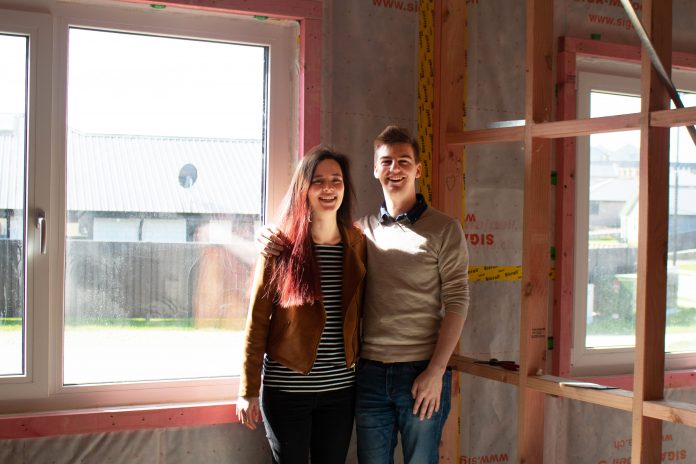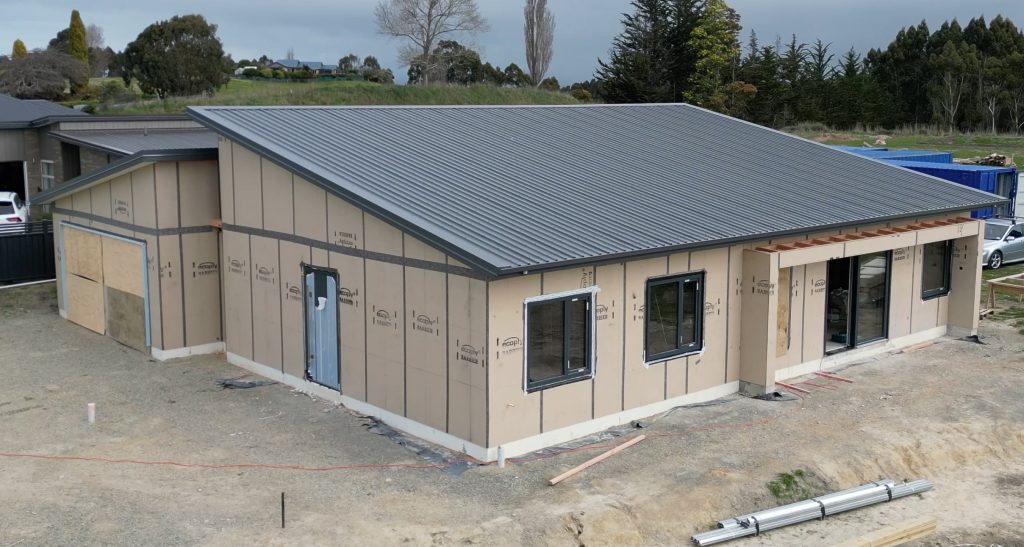
A young couple is in the process of building a more environmentally-sound future for themselves.
Sam Holt-Williams and Ashleigh Weir have teamed up with eHaus Waitaki/Mackenzie to build possibly the region’s first passive home in Oamaru.
The couple, who both work at Oceania Dairy in Glenavy, splitting their time between Timaru and Oamaru, had been looking into passive housing for a few years before stumbling across the eHaus website.
‘‘EHaus has plenty of information and case studies that we could draw from, which was really helpful,’’ Mr Holt-Williams said.
The couple approached eHaus Waitaki/Mackenzie about the possibility of building a passive home.
The Waitaki/Mackenzie franchise had been operating in Oamaru for about 18 months, and eHaus nationally for 12 years, manager Mike Lowe said.
While it was a New Zealand company, building was based around European certification standards, and there were 19 franchises across the country.
Each passive home was modelled using energy performance software, an idea which appealed to Mr Holt-Williams, who was an engineer.
‘‘I like the idea that everything is calculated and modelled before the build even starts. And the idea of testing before it’s built is very well done, in my opinion.
‘‘I’m very much looking forward to seeing the technology come to life in our home.’’
A passive home is heavily insulated, with little to no heating or cooling required. Windows tend to be smaller, and every join is completely sealed, to ensure no draughts or unwanted air movement.
The eHaus homes are built using sustainable products, and with the elimination of carbon emissions in mind.
EHaus Waitaki/Mackenzie sales manager Daniel Carson said while the smaller windows could be a deterrent for some, a passive home had ‘‘a design philosophy that needs to be understood’’.
Each house was tested to make sure it met performance metrics set out in the energy modelling software beforehand.
‘‘We do a blower door test, which checks for air tightness, and so you’ve pretty much got to be completely sealed . . . There’s a certifier that comes and signs everything off, and you have to take photos at various stages of construction to show that it’s been built a certain way,’’ Mr Carson said.
An eHaus build was probably about 20% more expensive than a standard build.
‘‘A lot of that is because the joinery is brought in from Germany,’’ he said.
‘‘All of the insulation is a lot higher — they use the fully-insulated foundation . . . so everything is just higher spec. You’ve got this mechanical heating/ventilation system . . . and that comes over from Europe as well.’’
Mr Holt-Williams said he had lived in homes that were cold in winter and too hot in summer, which was one of the reasons building a passive home appealed, despite the increase in costs.
The couple decided it was worth sacrificing other things in the home in order to have a fully-certified passive home, and stay within their budget.
‘‘I believe we should be incorporating the passive house principles in all homes and buildings, to improve the health of our homes and our families . . . The more it grows, the more the costs will come down and the better the technology will grow around it, so more New Zealanders can experience the passive house way,’’ he said.
The home was mid-construction at Holmes Hill Estate, a McBrimar Homes subdivision, and open for public viewing this Sunday.
The build was at the stage where people could see how the joins were sealed, and other different elements involved, Mr Carson said.
‘‘So all of the joins in the building, they’re all taped so there’s nowhere the air can escape.
‘‘The whole thing with the open construction day is people being able to see, because we’re at that stage where we can see all the taping, see how it all goes together, what the differences are. All the framing . . . is a lot thicker than a standard house to accommodate all the insulation.’’
Miss Weir said she was looking forward to coming home to a warm house in winter, and having no noise from outside.
‘‘A cheaper energy bill will be nice too!’’
The house is expected to be finished by Christmas.
Those wanting to attend the open construction day should register by emailing [email protected].




